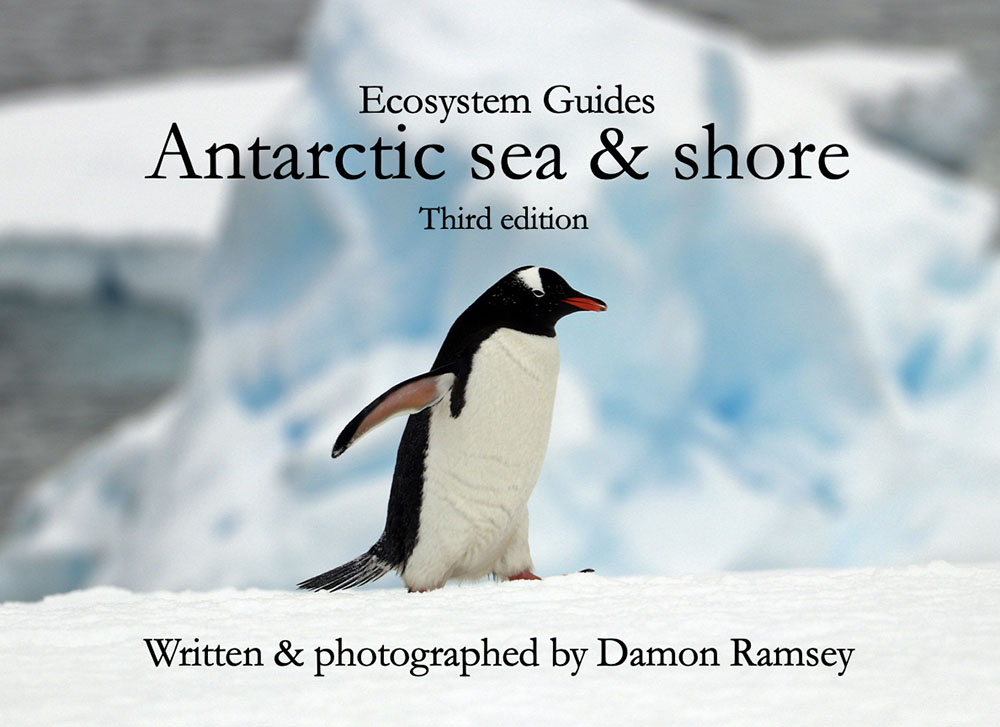ecosystem-guides.com
....exploring the planet's ecosystems
AUSTRALASIAN
Upland Rainforest
The Australasian forest includes the classic steamy lowland rainforest, but also the cooler higher altitude rainforest of the mountains. There is upland rainforest in the Atherton Tablelands inland of Cairns, and even higher altitude forest in the valleys of central New Guinea. Patches of related subtropical rainforest are found all the way down along the east coast until the southern border of Queensland.
Plants in the family Proteaceae are best known for flowering in the sandy soil heathlands of southern Africa and south-west Australia, but there is a high 'hidden' diversity in the Australasian rainforest at all altitudes.
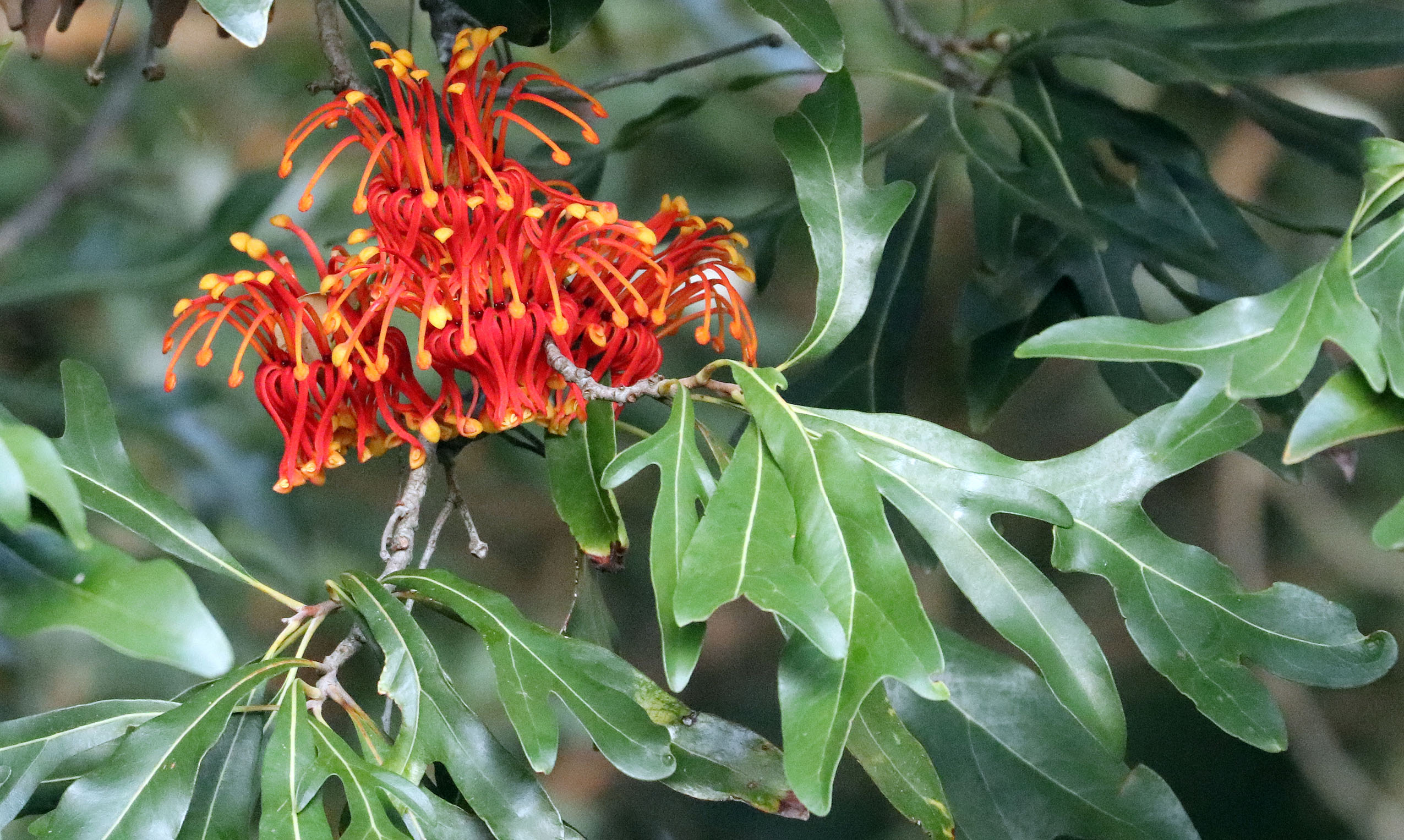 Stenocarpus spp.
Stenocarpus spp.The family Myrtaceae is arguably the most important on the Australian continent, although they are not as obvious in the rainforests as they are in the adjacent woodlands. Botanists often divide the family into two different sub-families. One group are the ‘woody-fruited myrtles’. These are dominant in drier parts of our continent, and include the classic Australian genera such as Eucalyptus and Melaleuca. Some Eucalypts do sneak into the forest, such as Eucalyptus grandis, 'Flooded Gum' or 'Rose Gum' (below), also found in the 'wet sclerophyll forest' which often transitions between drier forest and rainforest. The other group, the ‘soft-fruited myrtles’ are usually associated with wetter environments and found mainly in the tropical rainforests of the Americas, Australia and parts of Asia and the Pacific. It includes such genera as Syzygium, Acmena and Eugenia, and are commonly known as the ‘Apples’, ‘Satin-ashes’ and ‘Lilly-pillies’ and usually produce fleshy, colourful fruits.
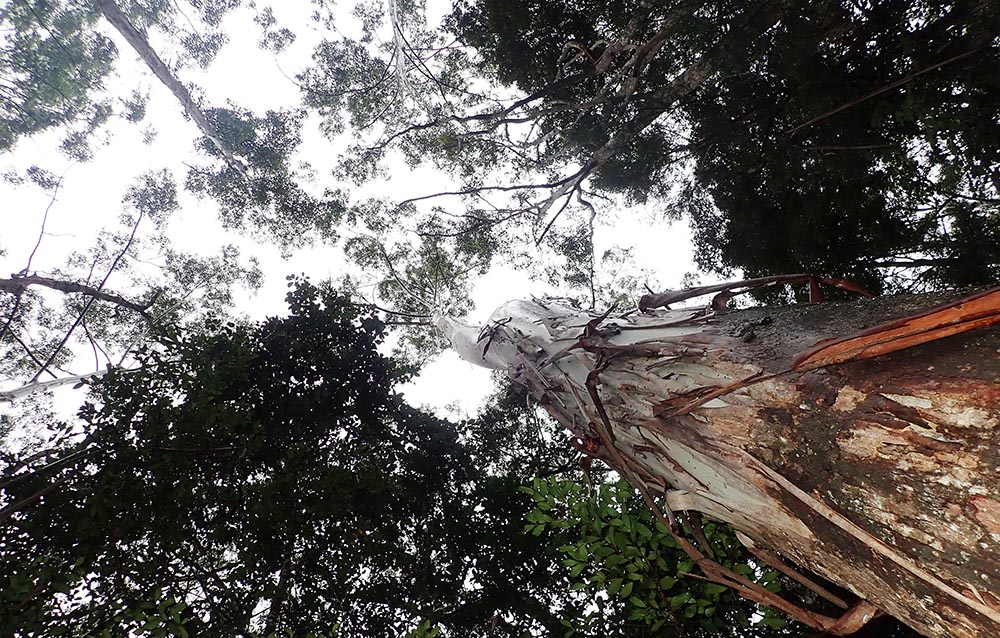 'Flooded Gum', 'Rose Gum'. (Atherton Birdwatching Lodge).
'Flooded Gum', 'Rose Gum'. (Atherton Birdwatching Lodge).Being able to fly means that many of the butterflies found in tropical Australasia are also distributed in the Wallacean and Indo-Malayan regions. However, there are some groups that have speciated in New Guinea, such as the 'Jezebels' Delias spp. and also the 'Owl Butterflies' of the Taenaris genus. These small but striking butterflies are usually distinguished by a pair of orange ringed circles with black and white pupils on a contrasting white underside of the wings. The caterpillar larvae feed mostly on the toxic leaves of cycads.
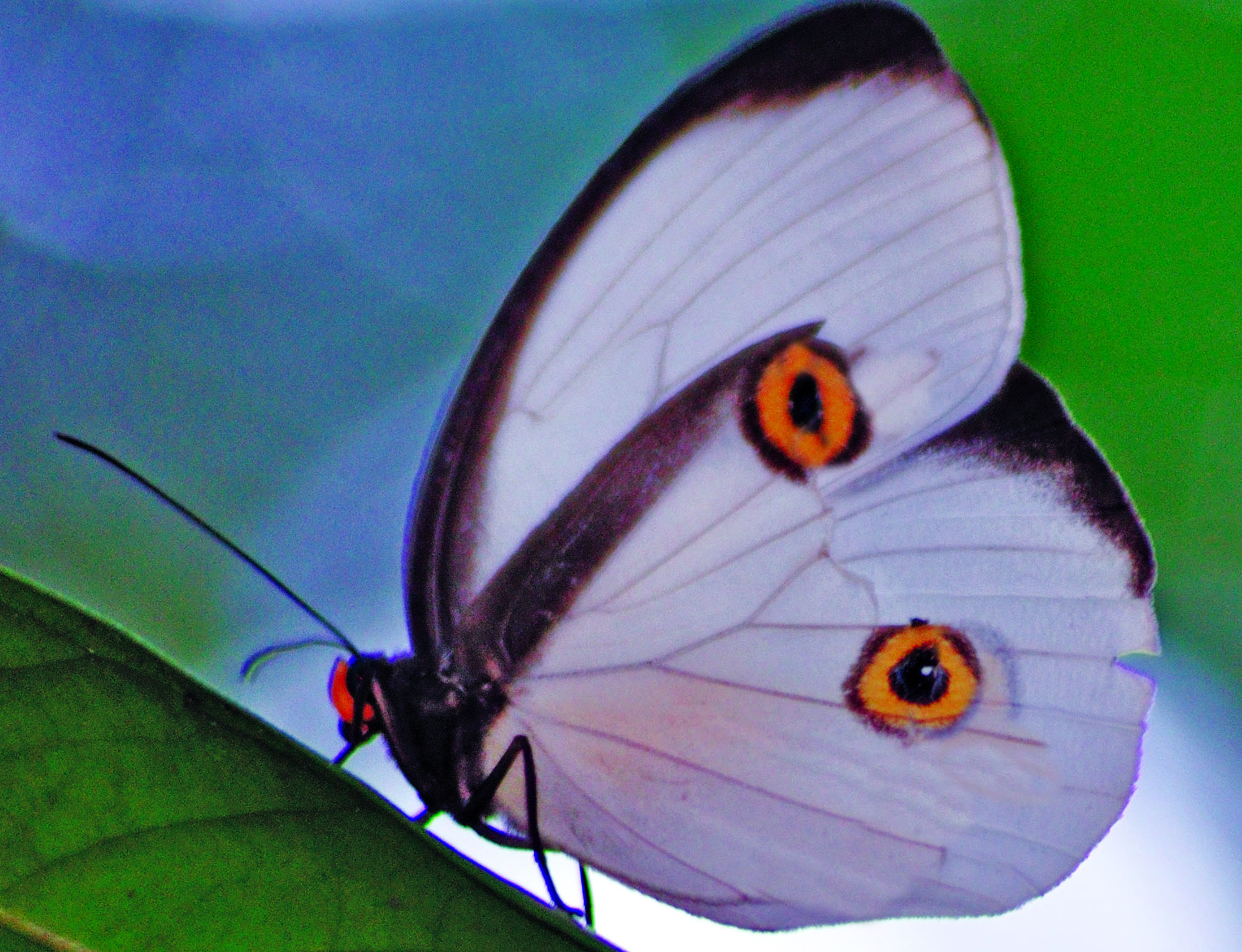
Geckos are a family of mainly nocturnal lizards. Their most distinctive features are the large, lidless eyes which do not blink, but are licked clean by the tongue. Another feature is their ability to make noises, although most of the native species are quiet. In Australia, there are over 110 species. They seem to be more of the drier habitats, and are surprisingly less diverse in the tropical rainforest, although there are some endemic species here. The genus Carphodactylus has only 1 species, which is endemic to north Queensland, Australia; Carphodactylus laevis, ‘Chameleon Gecko’.
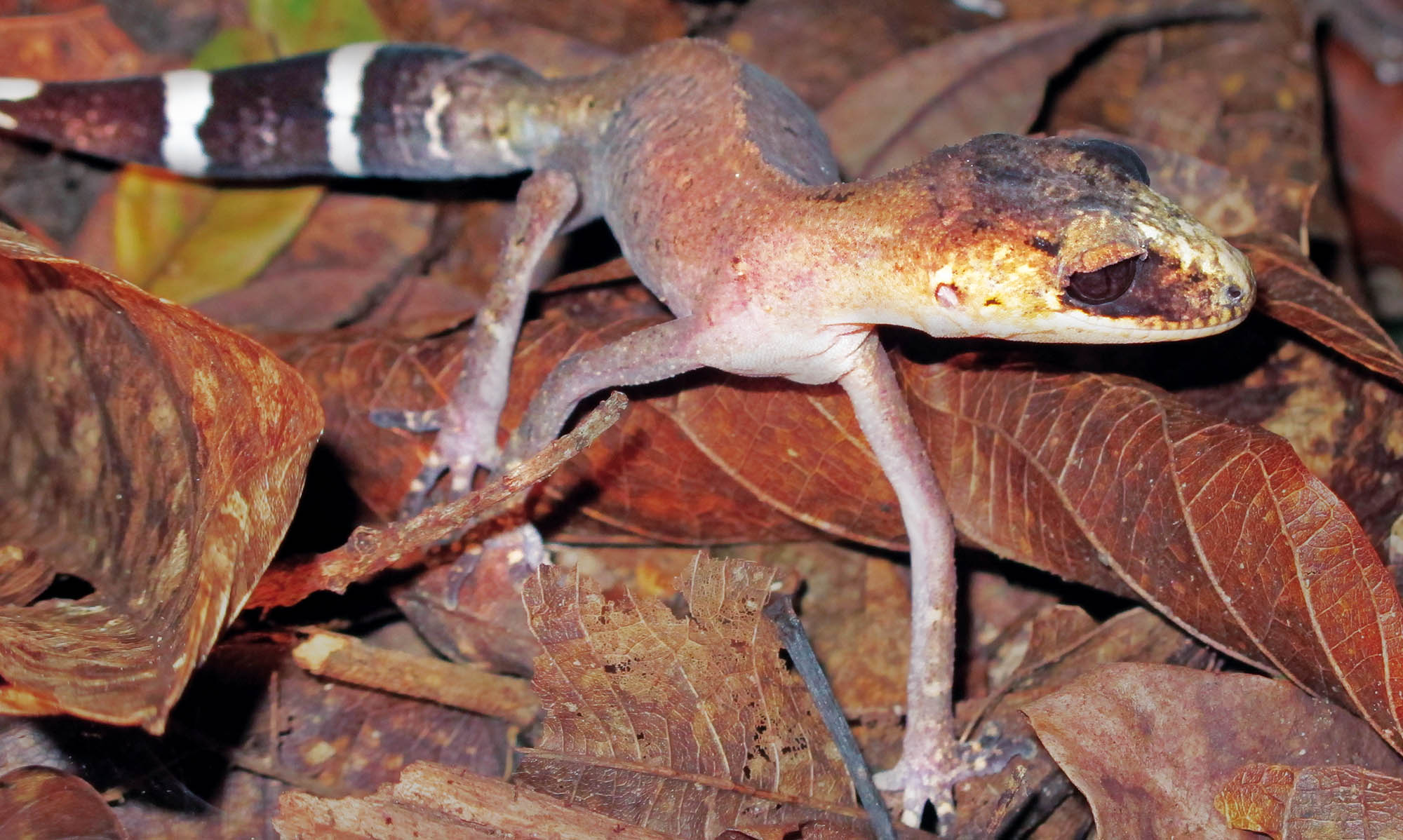 (Hypipamee Crater, Australia)
(Hypipamee Crater, Australia)All of the bowerbirds and catbirds are restricted to the Australasian region. They are primarily rainforest birds, although a number of species have adapted to live in the drier habitats in Australia. Bowerbirds are named after the bowers that the males build for courtship. The males display near their structure to attract females. Their calls are usually quite distinct, with strange, often mechanical sounding clicking, buzzing and chirping. The males are usually more colourful compared with the duller females. The juvenile males are also dull, and may take years to gain their full plumage. The most well known species is the 'Satin Bowerbird'.
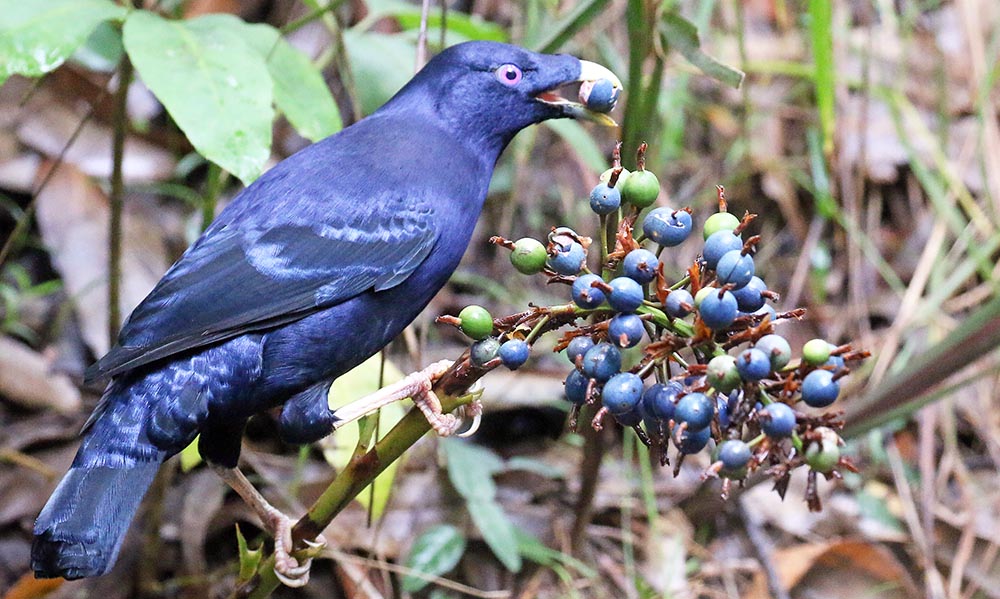 'Satin Bowerbird', (Atherton Tablelands Birdwatching Lodge)
'Satin Bowerbird', (Atherton Tablelands Birdwatching Lodge)The honeyeaters make up Australasia’s biggest family of birds, and subsequently there are many species found in the Australasian tropical rainforest. Honeyeaters are, as the name suggests, nectar feeders, and thus vital pollinators for many Australian plants. They are in many ways the ecological equivalent of the African/ Asian Sunbirds and the American Hummingbirds. However, most honeyeaters are much bigger than the overseas nectar feeders, and most are not delicate enough to hover. There are several species endemic to the rainforest, including...
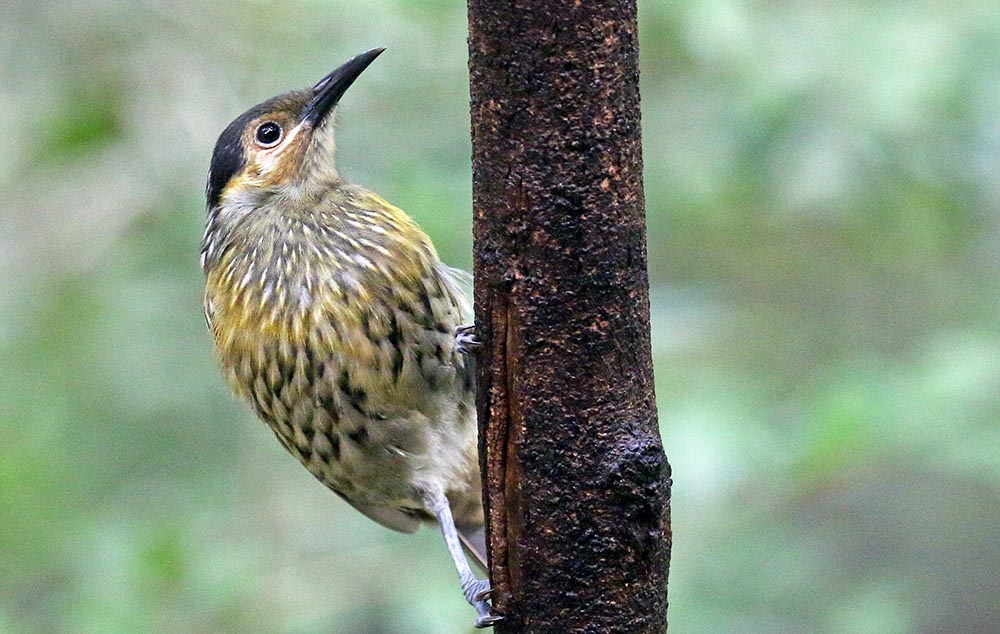 'Macleay's Honeyeater', (Atherton Tablelands Birdwatching Lodge).
'Macleay's Honeyeater', (Atherton Tablelands Birdwatching Lodge).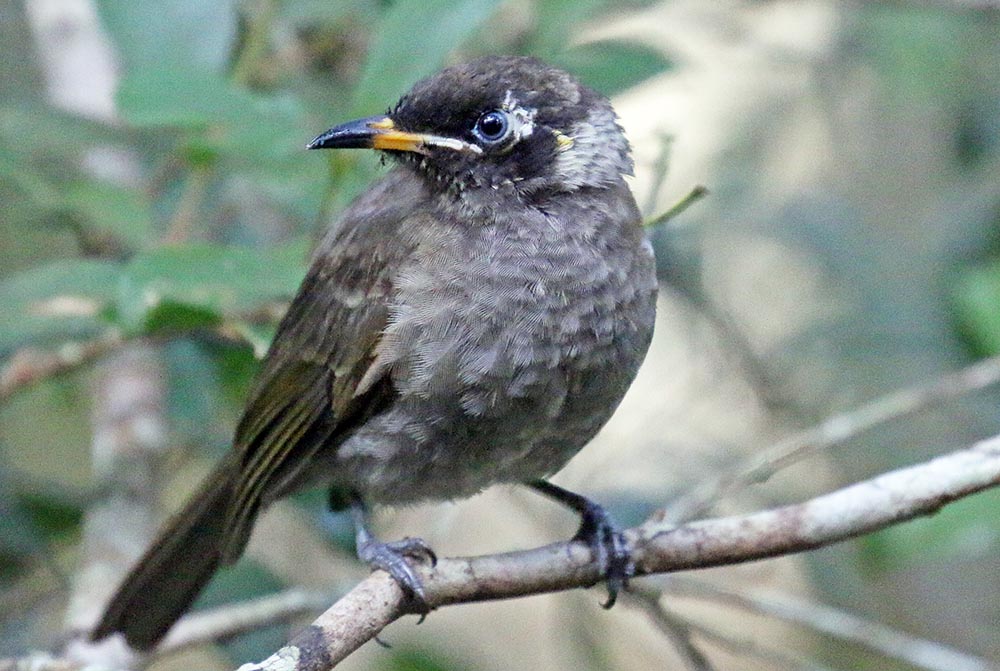 'Bridled Honeyeater', (Atherton Tablelands Birdwatching Lodge).
'Bridled Honeyeater', (Atherton Tablelands Birdwatching Lodge).The family Paradisaeidae contains the famous and glamorous 'Birds-of-Paradise'. They are sometimes shortened to "BOP's" - although don't get that confused with the other BOP - Bird Of Prey.
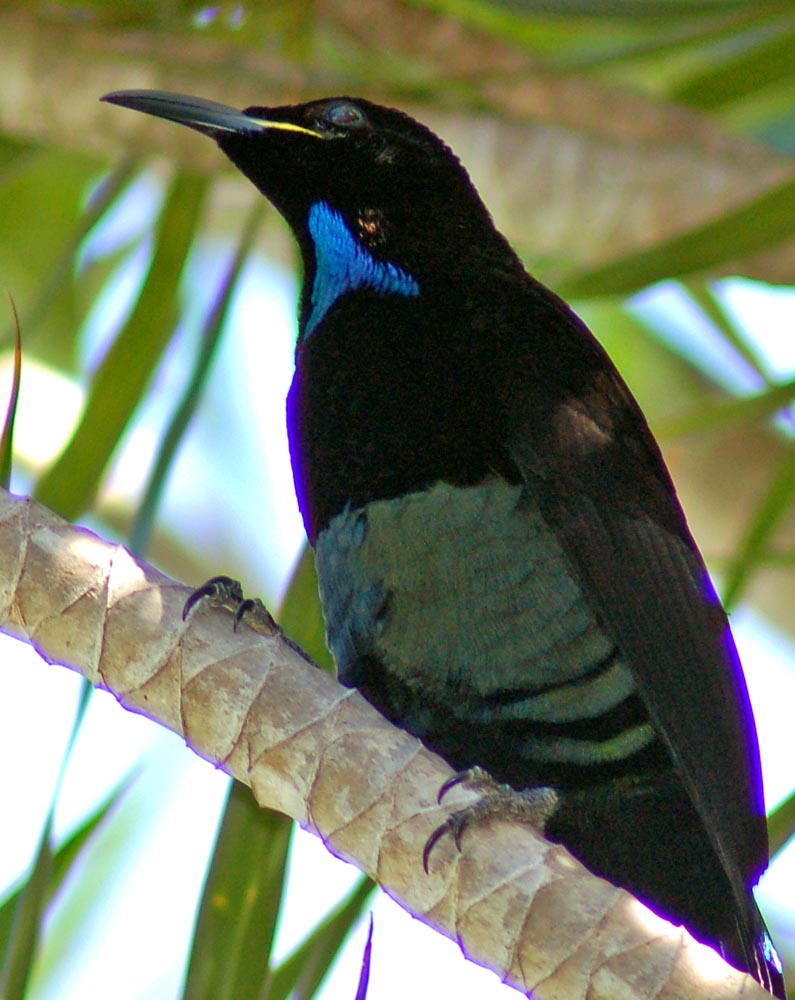 'Victoria's Riflebird', (Chambers Lodge).
'Victoria's Riflebird', (Chambers Lodge).This Ringtail Possum family includes at least 15 species in a range of genera. They are found in New Guinea, Australia, and some surrounding islands, with 7 species in Australia. They are not generally quite as wide ranging in their diet as other possums, such as the gliders and brushtails. They may feed on fruits and flowers, but generally the bulk of their diet is leaves. This results in ‘ringtails’ being more sluggish and appearing rather ‘dopey’, although many are capable of energetic leaps within the canopy. However, they are excellent climbers with strongly prehensile tails. They are also usually quieter than many other possums; their less reliance on vocalization in communication is reflected in their smaller ears. Ringtails are found in a variety of habitats in Australasia and surrounding islands, although they have a tendency to be more of a closed forest possum than the ‘gliding possums’ and the occasionally terrestrial ‘brushtails’. They have speciated most in the higher altitude rainforest of New Guinea and north-east Queensland.
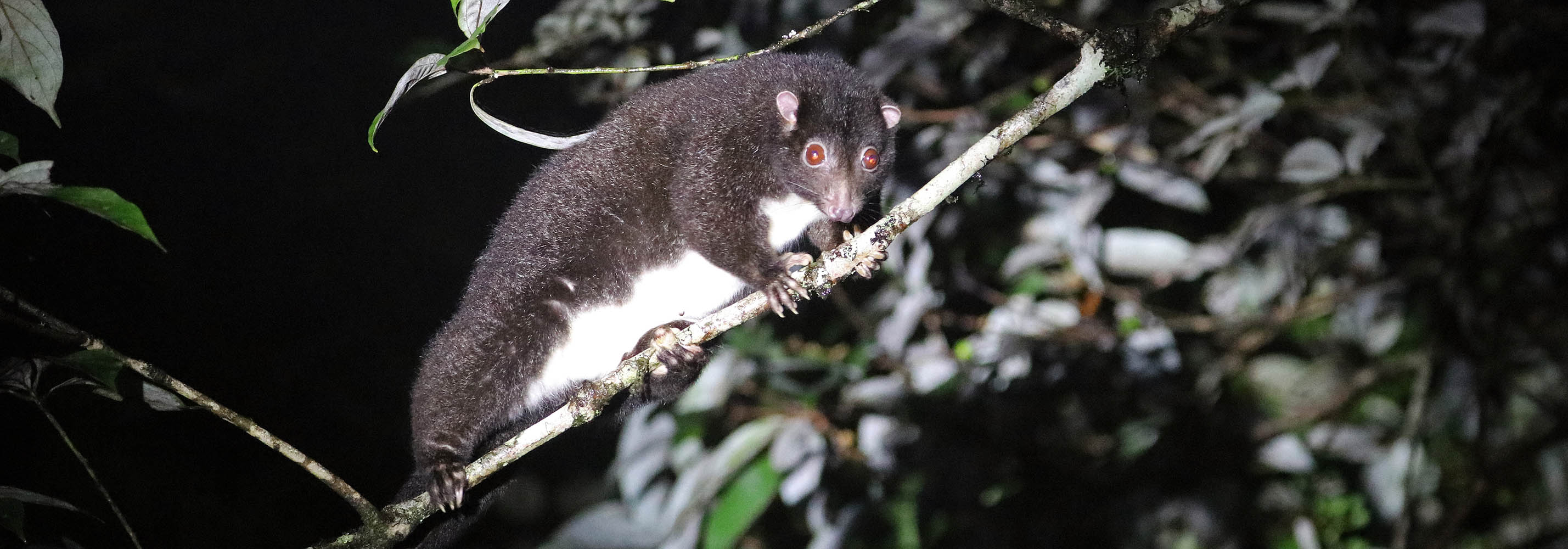 'Herbert River Ringtail', (Possum Valley, Queensland)
'Herbert River Ringtail', (Possum Valley, Queensland)Places to experience the Australasian upland rainforest
The Atherton Tablelands is one of the best places for upland rainforest birdwatching in Australasia, and there are great value places to stay, including: the Atherton Tablelands Birdwatchers Cabin, Possum Valley, and the grand master himself: Chambers Rainforest Apartments Australia. Higher up in altitude is the national park of Hypipamee Crater, great for spotlighting nocturnal mammals.
